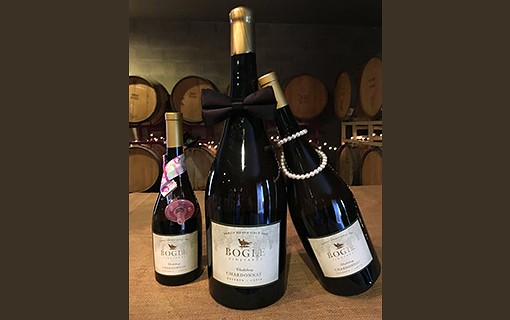We've been around for over 50 years.
How about you?
By clicking Enter Here you affirm that you are of legal drinking age and that you agree to allow us to use cookies and collect information about you as described in our privacy policy.
Enter HereEvery vineyard, every grape type, every location is different, of course. And for Warren, who will see his 19th harvest this fall, that means knowing and understanding 1,600 acres of wine grapes. The grass you see growing down some of the rows is called a “cover crop” and can actually be one of dozens of different types of plants. Selecting the right cover crop depends on what the vineyard needs.
“One of the main purposes of using a cover crop is to adjust vine vigor,” explains Bogle viticulturalist Bibiana Guerra, “vines can grow too much, producing grapes that are not as concentrated or flavorful as we want. Cover crops compete with the vines and use nutrients and water that the vines would otherwise soak up. This helps us manage the vine growth and the quality of the grapes.”
“On the other hand,” Warren says, “sometimes you want to improve soil texture or composition, so for instance, you would plant a cover crop that might impart nitrogen into the soil.” Discing the cover crop under at the end of the season also helps, by adding organic matter to the soil like mulch. “Every field needs something different, and not only does that change from variety to variety, but year to year as well.”
Fine tuning this has taken many years, but the family has been using cover crops since the very beginning, even if unknowingly. There is a tale that involves the first 10 acres of Chenin Blanc and Petite Sirah planted in 1968. The 3rd generation farmer, Warren Bogle, apparently didn’t like the idea of waiting around three years for grapes to grow and be harvested from the vines, so he planted corn in between the rows of wine grapes. He did this so he could harvest something off the land while he waited for the grapes to mature. Unfortunately, we don’t have a picture of that first cover crop, but we sure wish we did!


Ever wonder how our rich and luscious Chardonnay is made? Maybe it’s time for “the TALK”
March 5, 2016While all of Bogle’s wines are handcrafted using a combination of age-old techniques and the latest winemaking innovations, this single vineyard Reserve Chardonnay really is a study in the art of crafting an amazing wine. From a vineyard a stone’s…

BOGLE WINS BIG at the San Francisco Chronicle Wine Competition
February 6, 2016With the first wine competition of 2016 in the books, Bogle wines made an impressive showing with nine of our varietals bringing home awards. The Sauvignon Blanc, Merlot and Petite Sirah Port all earned Gold medals, while the Chardonnay even earned a Double…